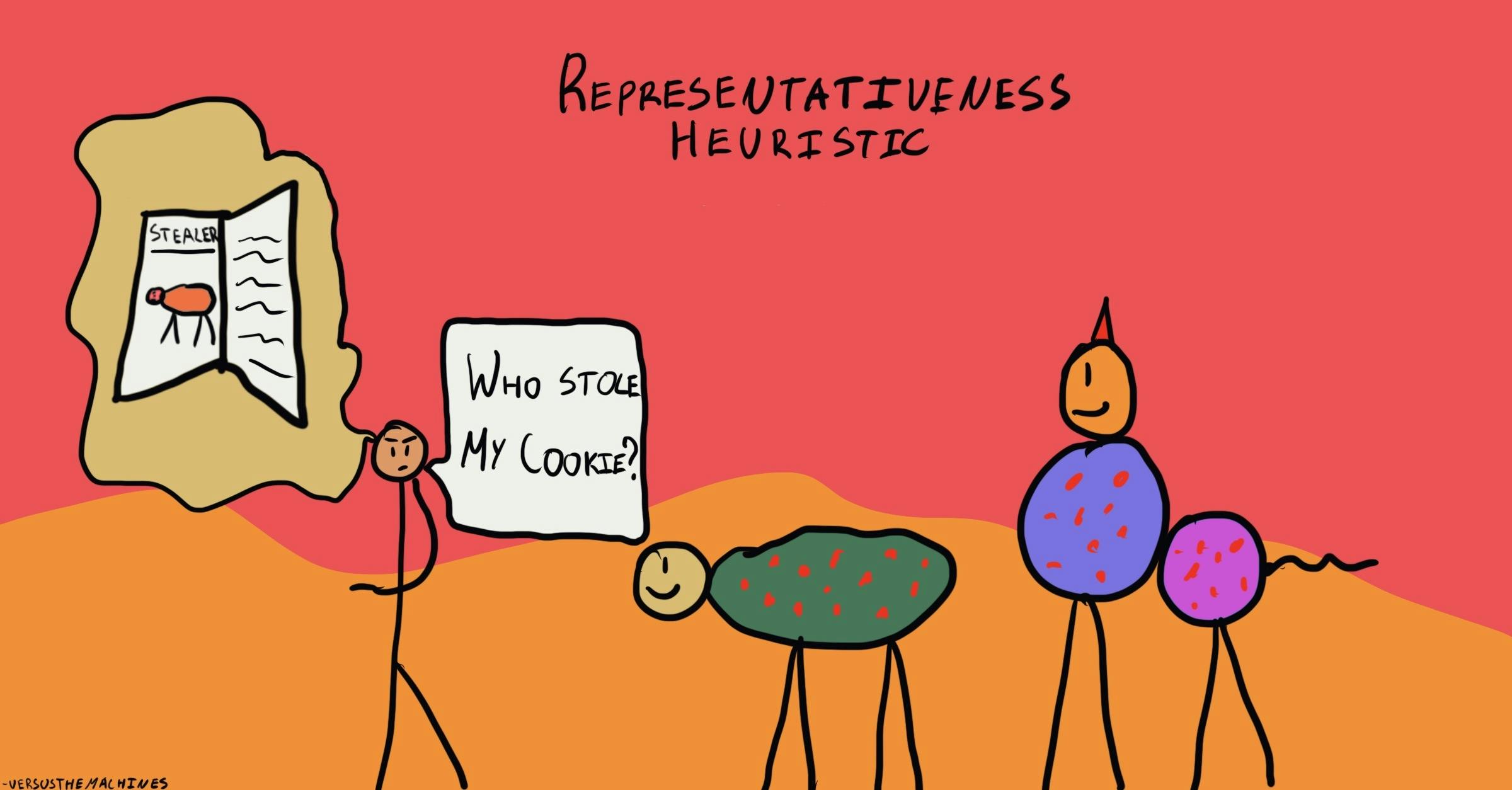Why do we use similarity to gauge statistical probability?
Representativeness Heuristic
, explained.What is the Representativeness Heuristic?
The representativeness heuristic is a mental shortcut that we use when estimating probabilities. When we’re trying to determine how likely a certain event is, we often make our decision by assessing how similar it is to an existing mental prototype.

Where this bias occurs
Let’s say you’re going to a concert with your friend Sarah. She also invited her two friends, John and Adam, whom you’ve never met before. You know that one is a mathematician, while the other is a musician.
When you finally meet Sarah’s friends, you notice that John wears glasses and is a bit shy, while Adam is more outgoing and dressed in a band T-shirt and ripped jeans. Without asking, you assume that John must be the mathematician and Adam must be the musician. You later discover that you were mistaken: Adam does math, and John plays music.
Thanks to the representativeness heuristic, you guessed Adam and John’s jobs based on stereotypes surrounding how these careers typically dress. This reliance caused you to ignore better indicators of their professions, such as simply asking them what they do for a living.














